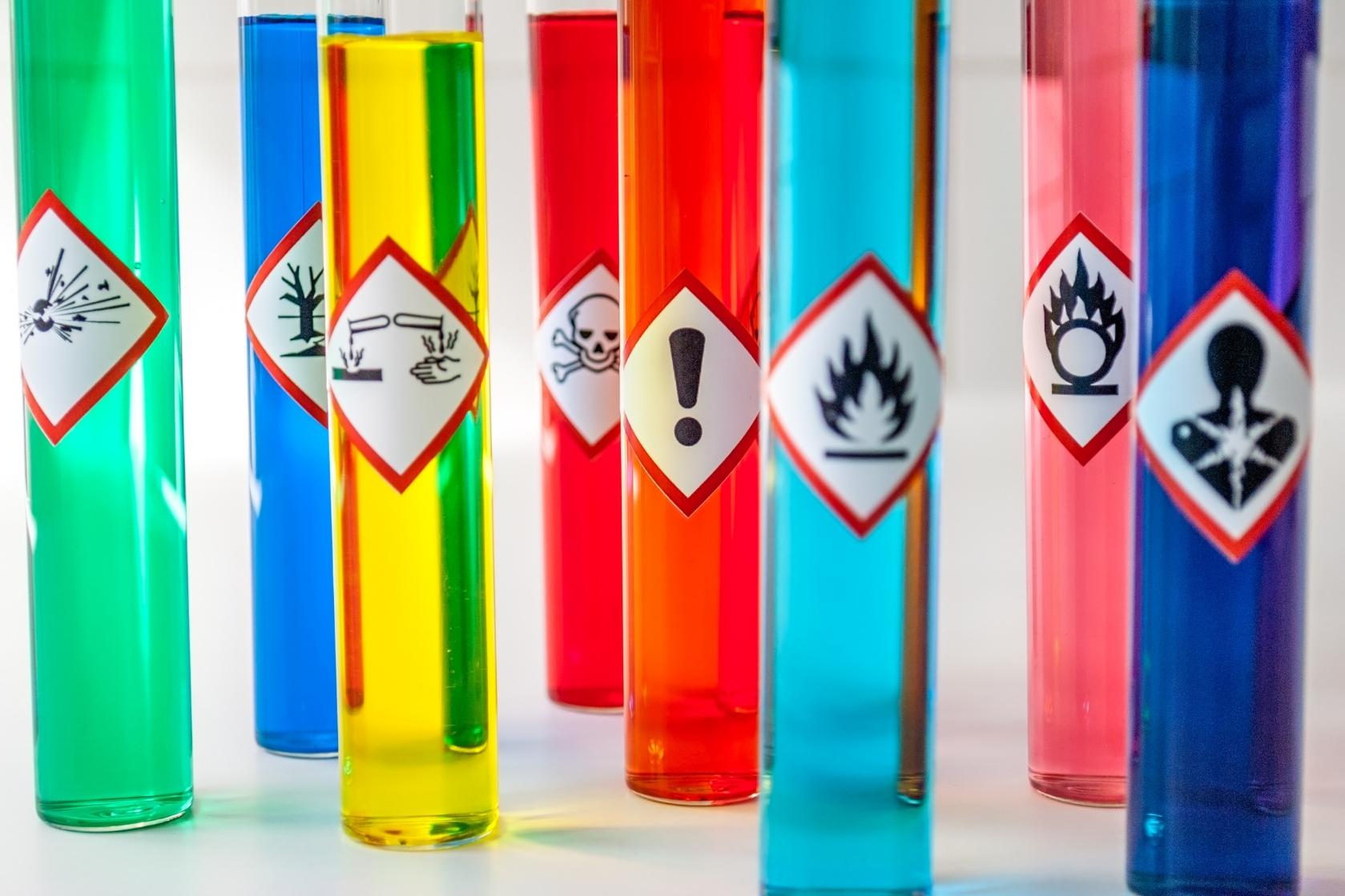
Hazard Pictograms
What are Hazard pictograms?
According to the "Guide to Labelling and Packaging for the SEA Regulation," hazard pictograms are graphical shapes with symbols or other graphical elements such as a border, background pattern, or colour, designed to convey specific information about particular hazards. Hazard pictograms are used to guide users in situations where certain dangers may arise, such as during the use or storage of substances and mixtures. Understanding and applying these pictograms correctly is crucial for chemical safety.
Meanings of Hazard Pictograms
In Annex 5 of the SEA (Turkey REACH) Regulation, hazard pictograms are divided into four main categories:
1. Physical Hazards
|
Physical Hazards |
|
|
Symbol: Exploding Bomb |
|
|
Hazard Pictogram |
Hazard Class and Category |
|
|
Annex 1, Title 2.1: Unstable explosives |
|
Symbol: Flame |
|
|
Hazard Pictogram |
Hazard Class and Category |
|
|
Annex 1, Title 2.2: Flammable gases, Hazard category 1 |
|
Symbol: Flame over Circle |
|
|
Hazard Pictogram |
Hazard Class and Category |
|
|
Annex 1, Title 2.4: Oxidizing gases, Hazard category 1 |
|
Symbol: Gas Cylinder |
|
|
Hazard Pictogram |
Hazard Class and Category |
|
|
Annex 1, Title 2.5: Compressed gases; Liquefied gases; Refrigerated liquefied gases; Dissolved gases |
|
Symbol: Corrosion |
|
|
Hazard Pictogram |
Hazard Class and Category |
|
|
Annex 1, Title 2.16: Corrosive to metals, Hazard category 1 |
|
Classes and categories of physical hazards that do not require a hazard pictogram |
|
|
Annex 1, Title 2.1: Explosives, Division 1.5 |
|
2. Health Hazards
|
Health Hazards |
|
|
Symbol: Skull and Crossbones |
|
|
Hazard Pictogram |
Hazard Class and Category |
|
|
Annex 1, Title 3.1: Acute toxicity (oral, dermal, inhalation), Hazard categories 1, 2, 3 |
|
Symbol: Corrosion |
|
|
Hazard Pictogram |
Hazard Class and Category |
|
|
Annex 1, Title 3.2: Skin corrosion, Hazard category 1 and subcategories 1A, 1B, 1C |
|
Symbol: Exclamation Mark |
|
|
Hazard Pictogram |
Hazard Class and Category |
|
|
Annex 1, Title 3.1: Acute toxicity (oral, dermal, inhalation), Hazard category 4 |
|
Symbol: Health Hazard |
|
|
Hazard Pictogram |
Hazard Class and Category |
|
|
Annex 1, Title 3.4: Respiratory sensitization, Hazard categories 1, 1A, 1B |
|
Health hazard categories that do not require a hazard pictogram |
|
|
Annex 1, Title 3.7: Reproductive toxicity, effects on or via lactation, additional hazard category |
|
3. Environmental Hazards
|
Environmental Hazards |
|
|
Hazard Pictogram |
Hazard Class and Category |
|
|
Annex 1, Title 4.1: Hazardous to the aquatic environment |
|
Environmental hazard classes and categories that do not require a hazard pictogram: |
|
|
Annex 1, Title 4.1: Hazardous to the aquatic environment – Long-term hazard categories: Chronic 3, Chronic 4 |
|
4. Additional Hazards
|
Additional Hazards |
|
|
Hazard Pictogram |
Hazard Class and Category |
|
|
Annex 1, Title 5.1: Dangerous to the ozone layer, Hazard Category 1 |
How to Use Hazard Pictograms
Hazard pictograms are used in a format that complies with the standards set out under the SEA Regulation in Turkey. Each of these pictograms contains pictograms representing a specific type of hazard.
Hazard pictograms appear on the packaging of substances or mixtures. When using these pictograms, it is essential to ensure that they align with the hazard classification of the substance or mixture.
According to the Labelling and Packaging Guide for the SEA Regulation, the following points should be considered to ensure the proper placement of hazard pictograms:
- The colour and presentation of the label should be designed so as not to obstruct the clear visibility of the hazard symbol and its background.
- Hazard pictograms should be placed in the form of a square set on a point, with a red border and a white background. The symbol itself must be black.
- Each hazard symbol should cover at least one-fifth of the minimum surface area of the label. However, it should be noted that the minimum area should not be less than 1 cm².
- For substances and mixtures classified for multiple hazards, it may be necessary to use more than one hazard symbol on the label. In such cases, it should be checked whether the prioritization rules specified in SEA Article 28 have been applied. Generally, hazard pictograms reflecting the most severe hazard category for each hazard class will be added to the label, but this condition applies in the case of a substance with both harmonized and non-harmonized classification (see SEA Article 28(2)).
For more information on hazard pictograms, you can contact us, and we can provide support with the labelling and packaging processes related to your products.










